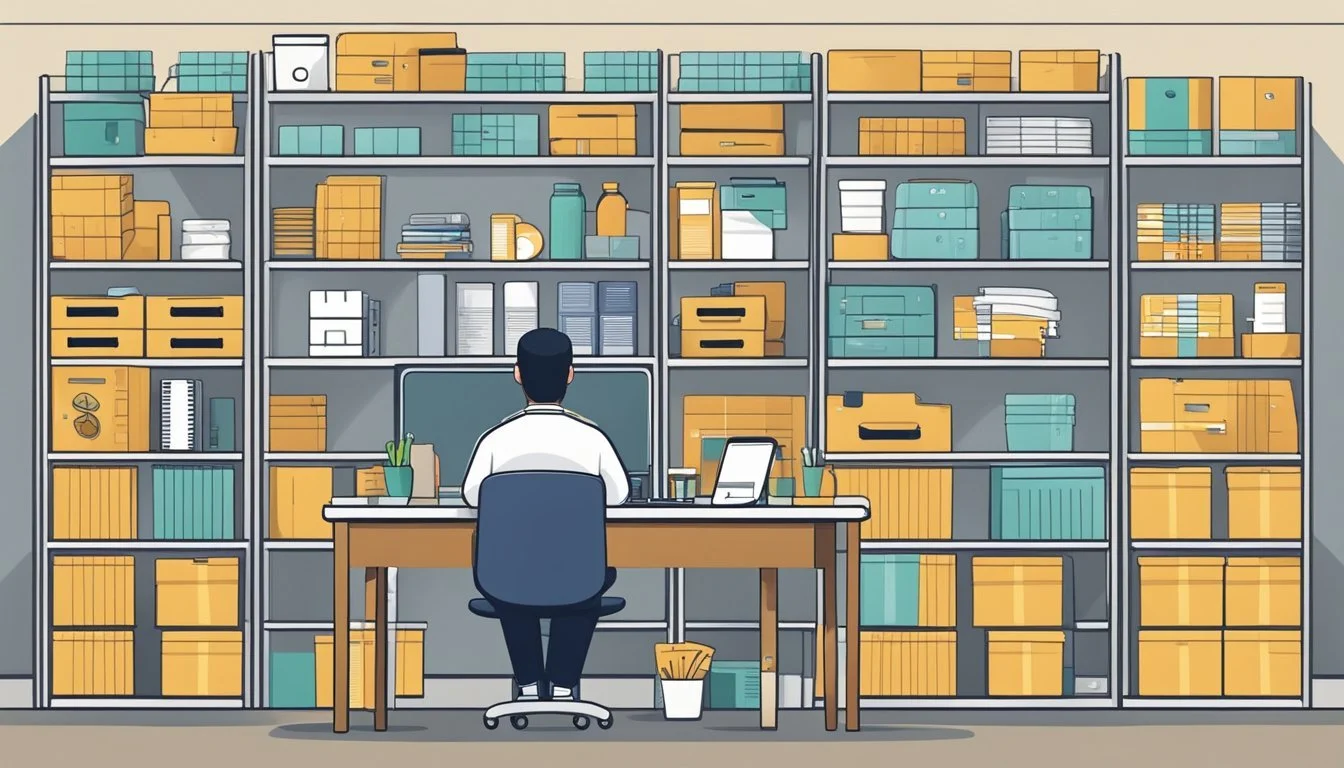Recognizing the Symbol of Obsessive Compulsive Disorder Awareness
The concept of an OCD flag or symbol has sparked discussion within the OCD community. Some individuals seek a way to show pride in living with OCD and raise awareness, while others question the appropriateness of such symbols.
The teal ribbon has emerged as an unofficial symbol for OCD awareness, though it is not universally recognized or accepted. This ribbon color is sometimes used to represent OCD during mental health awareness campaigns and events.
Opinions on OCD symbols vary widely. Some people with OCD find comfort in identifying with a shared emblem, while others prefer not to draw attention to their condition. The debate reflects the diverse experiences and perspectives within the OCD community.
Understanding OCD
Obsessive-Compulsive Disorder (OCD) is a complex mental health condition characterized by persistent, unwanted thoughts and repetitive behaviors. It affects millions worldwide, often causing significant distress and impairment in daily life.
Defining Obsessive-Compulsive Disorder
OCD is a psychiatric disorder marked by the presence of obsessions and compulsions. Obsessions are intrusive, unwanted thoughts, images, or urges that cause anxiety or distress. Compulsions are repetitive behaviors or mental acts performed to alleviate the anxiety caused by obsessions.
These symptoms can be time-consuming and interfere with a person's daily activities, relationships, and quality of life. OCD is not simply a matter of being overly tidy or perfectionistic; it is a serious condition that requires proper diagnosis and treatment.
Symptoms and Diagnostic Criteria
The primary symptoms of OCD include:
Obsessions: Persistent, intrusive thoughts, urges, or images
Compulsions: Repetitive behaviors or mental acts
To meet the diagnostic criteria for OCD, an individual must:
Experience obsessions, compulsions, or both
Find these symptoms time-consuming (taking more than 1 hour per day)
Experience significant distress or impairment in daily functioning
Common obsessions include fears of contamination, harm, or making mistakes. Typical compulsions involve excessive cleaning, checking, counting, or arranging objects.
Types of OCD
OCD can manifest in various forms, each with its own specific obsessions and compulsions:
Contamination OCD: Fear of germs, dirt, or illness
Checking OCD: Repeatedly verifying locks, appliances, or safety measures
Symmetry OCD: Need for order, exactness, and symmetry
Harm OCD: Fear of harming oneself or others
Religious OCD: Obsessions related to blasphemy or morality
Other types include hoarding OCD, relationship OCD, and "pure O" OCD, which primarily involves mental compulsions. Each type may require tailored treatment approaches, but all share the core features of intrusive thoughts and compulsive behaviors.
Impact on Life
OCD significantly disrupts daily functioning, causing distress and impairment across various life domains. It affects individuals' routines, relationships, and overall well-being, often leading to heightened anxiety and social challenges.
Effect on Daily Activities
OCD can severely impact a person's ability to perform everyday tasks. Simple activities like getting dressed or leaving the house may become time-consuming ordeals. Individuals might spend hours checking locks, organizing belongings, or performing rituals.
Work and school performance often suffer due to OCD-related distractions and time-consuming compulsions. Productivity decreases as intrusive thoughts interfere with concentration and task completion.
OCD can also disrupt sleep patterns. Nighttime rituals or obsessive worrying may lead to insomnia or fragmented sleep, resulting in daytime fatigue and reduced cognitive function.
OCD and Anxiety
Anxiety is a core component of OCD, fueling the cycle of obsessions and compulsions. Intrusive thoughts trigger intense anxiety, prompting individuals to perform rituals to alleviate distress.
This anxiety can be debilitating, causing:
Panic attacks
Avoidance behaviors
Physical symptoms (e.g., sweating, trembling)
The constant state of hypervigilance and worry often leads to emotional exhaustion. Many individuals with OCD experience comorbid anxiety disorders, further complicating their symptoms and treatment.
Social and Gender Considerations
OCD can strain relationships and social interactions. Individuals may avoid social situations due to fear of contamination or embarrassment about their compulsions. This isolation can lead to loneliness and depression.
Family members and partners often become involved in OCD rituals, causing stress within relationships. Misunderstandings about the nature of OCD can lead to frustration and conflict.
While OCD affects all genders, research suggests slight variations in symptom presentation. Women may experience more contamination-related obsessions, while men might report more sexual or religious obsessions. However, individual experiences vary widely regardless of gender.
Cultural factors can influence OCD manifestations and help-seeking behaviors. Some communities may stigmatize mental health issues, making it harder for individuals to seek treatment.
Manifestations of OCD
Obsessive-compulsive disorder (OCD) manifests in various ways, characterized by persistent intrusive thoughts and repetitive behaviors. These manifestations can significantly impact a person's daily life and mental well-being.
Intrusive Thoughts and Mental Acts
Intrusive thoughts are unwanted, distressing ideas that repeatedly enter a person's mind. These thoughts often revolve around themes of harm, sexuality, or morality. Common examples include fears of accidentally hurting someone or doubts about one's sexual orientation.
Mental acts are internal rituals performed to neutralize intrusive thoughts. They may involve counting, repeating phrases silently, or praying excessively. These acts provide temporary relief but reinforce the cycle of obsessions and compulsions.
People with OCD often recognize their thoughts as irrational but struggle to dismiss them. This awareness can lead to increased anxiety and attempts to suppress or control these thoughts, paradoxically making them more persistent.
Understanding Harm OCD
Harm OCD involves intrusive thoughts about causing harm to oneself or others. These thoughts are deeply distressing and contrary to the person's values and desires.
Common harm OCD themes include:
Fear of accidentally harming loved ones
Worry about losing control and committing violent acts
Intrusive images of harming children or pets
People with harm OCD often engage in avoidance behaviors, such as removing sharp objects from their home or avoiding being alone with others. They may also seek constant reassurance that they haven't harmed anyone.
It's crucial to understand that individuals with harm OCD are not at higher risk of acting on these thoughts. The very fact that these thoughts cause distress indicates they are ego-dystonic and not reflective of the person's true desires.
The Fear of Contamination
Contamination OCD revolves around an excessive fear of germs, dirt, or other perceived contaminants. This fear can extend beyond physical contaminants to include ideas of mental or spiritual contamination.
Common manifestations include:
Excessive hand washing or showering
Avoiding touching objects in public spaces
Elaborate cleaning rituals for household items
People with contamination OCD may experience intense anxiety when exposed to perceived contaminants. They often develop complex avoidance strategies and cleaning routines to manage their fears.
These behaviors can significantly impact daily life, leading to skin irritation from excessive washing, social isolation, and difficulty maintaining work or personal relationships. Treatment typically involves exposure and response prevention therapy to gradually reduce the fear response to perceived contaminants.
Approaches to Treatment
Effective OCD treatment typically involves therapy, exposure techniques, and sometimes medication. These approaches aim to reduce symptoms and improve quality of life for individuals with OCD.
Therapy Options
Cognitive-behavioral therapy (CBT) is a primary treatment for OCD. It helps patients identify and change thought patterns and behaviors associated with their obsessions and compulsions. CBT sessions often focus on challenging irrational beliefs and developing coping strategies.
Group therapy can provide additional support and allow individuals to share experiences with others facing similar challenges. Family-based therapy may be beneficial, especially for children and adolescents with OCD.
Exposure and Response Prevention (ERP)
ERP is a specialized form of CBT highly effective for OCD treatment. It involves gradual exposure to anxiety-provoking situations or thoughts while preventing the typical compulsive response.
A therapist guides the patient through increasingly challenging exposures. This process helps reduce anxiety over time and weakens the connection between obsessive thoughts and compulsive behaviors.
ERP success rates are promising, with many patients experiencing significant symptom reduction.
The Role of Medication
Selective serotonin reuptake inhibitors (SSRIs) are the most commonly prescribed medications for OCD. These antidepressants can help reduce obsessive thoughts and compulsive behaviors.
Medication may be used alone or in combination with therapy, depending on symptom severity and individual needs. Dosages for OCD treatment are often higher than those used for depression.
Other medications, such as antipsychotics, may be prescribed in some cases to augment SSRI treatment. Regular monitoring by a healthcare provider is essential to manage potential side effects and adjust treatment as needed.
Support and Management
Effective support and management are crucial for individuals with OCD. Implementing coping strategies, accessing support networks, and focusing on ongoing management can significantly improve quality of life.
Coping Strategies
Cognitive-behavioral therapy (CBT) techniques are essential for managing OCD symptoms. Exposure and response prevention (ERP) helps individuals confront their fears while resisting compulsive behaviors. Mindfulness practices can reduce anxiety and increase awareness of intrusive thoughts.
Relaxation techniques like deep breathing and progressive muscle relaxation can alleviate stress. Regular exercise and maintaining a healthy sleep schedule also contribute to symptom management.
Creating a structured routine and setting realistic goals helps individuals stay focused and motivated. Breaking tasks into smaller, manageable steps can prevent overwhelming feelings.
Accessing Support Networks
Support groups provide a safe space for individuals with OCD to share experiences and coping strategies. Online forums and local meetups offer opportunities to connect with others facing similar challenges.
Family and friends play a vital role in the support system. Educating loved ones about OCD can foster understanding and improve relationships.
Professional support from therapists specializing in OCD treatment is crucial. Regular therapy sessions help individuals develop and refine coping skills.
The International OCD Foundation and similar organizations offer resources, educational materials, and support group listings.
Ongoing Management and Recovery
Long-term management of OCD often involves a combination of therapy and medication. Selective serotonin reuptake inhibitors (SSRIs) are commonly prescribed to reduce symptoms.
Regular check-ins with mental health professionals help monitor progress and adjust treatment plans as needed. Tracking symptoms and triggers can provide valuable insights for ongoing management.
Practicing self-compassion is essential. Recognizing that setbacks are part of the recovery process helps maintain a positive outlook.
Continuing education about OCD and its treatment empowers individuals to take an active role in their recovery. Staying informed about new research and treatment options can be beneficial.


